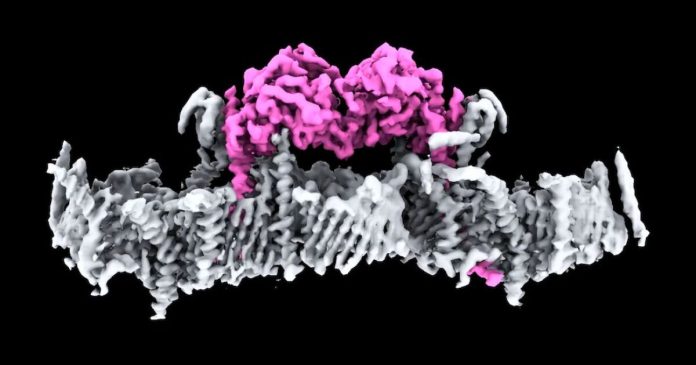Scientists have finally pinpointed a protein that plays a key role in Parkinson’s disease. Known as PINK1, this protein has been associated with the disease for many years, but its structure and activation mechanism have not been fully understood until now.
When functioning properly, PINK1 is crucial for cellular recycling processes. It detects damage in mitochondria, the energy-producing structures, and accumulates on their surface. PINK1 then signals other proteins to remove the damaged components, allowing new ones to take their place.
However, mutations in PINK1 can disrupt this process, leading to the accumulation of damaged mitochondria in cells, ultimately causing cell death. This is particularly harmful for energy-demanding cells like brain cells, contributing to the gradual degeneration observed in Parkinson’s disease.
Although the role of PINK1 in Parkinson’s has long been recognized, understanding its structure and interaction with mitochondria has been a challenge. Researchers at WEHI in Australia have now successfully visualized the structure of PINK1 attached to mitochondria for the first time, using cryo-electron microscopes.
Dr. Sylvie Callegari, the lead author of the study, stated, “This is the first time we’ve observed human PINK1 attached to damaged mitochondria, revealing a complex array of proteins constituting the docking site. We also identified how mutations seen in Parkinson’s patients affect human PINK1.”
The proteins comprising the docking site are critical pieces of the puzzle that were previously unknown. They offer numerous potential targets for reactivating PINK1 so it can resume its function effectively.
Professor David Komander, the corresponding author of the study, commented, “Our findings present new avenues for modulating PINK1 activity, essentially switching it on, which could be transformative for Parkinson’s patients. This discovery represents a significant advancement in Parkinson’s research, shedding light on the binding process between PINK1 and mitochondria.
The next phase will involve utilizing this information to identify drugs that can activate PINK1, potentially slowing or halting the progression of Parkinson’s disease.
The study was published in the journal Science.




